By MWF Communications Coordinator Cameron Evans and North-Central Field Representative Morgan Marks.
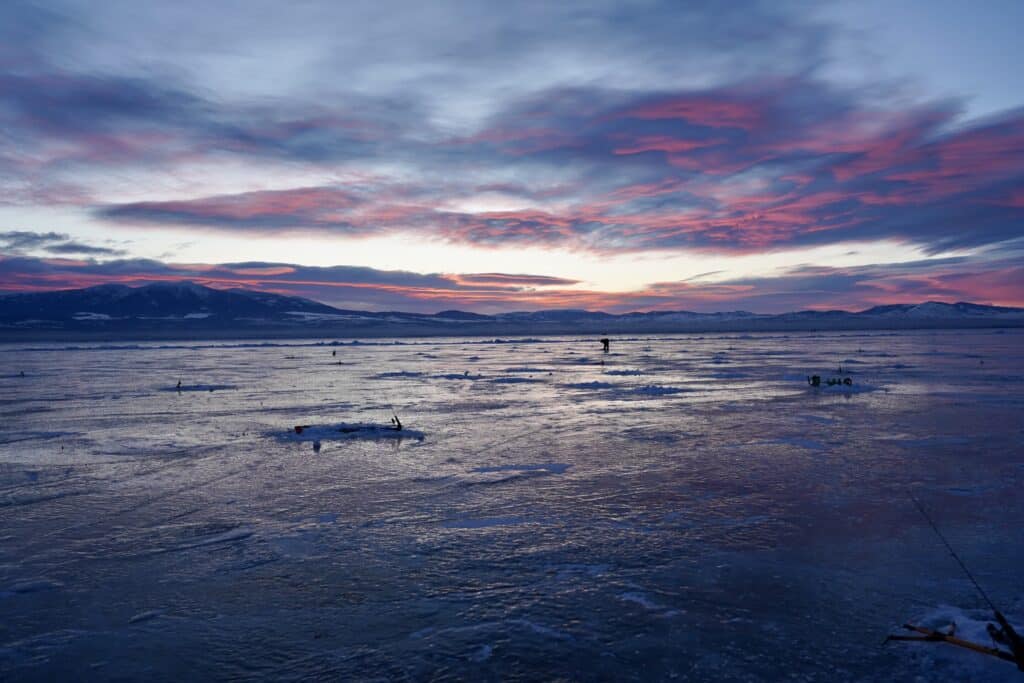
The sky over Canyon Ferry Reservoir cast cotton candy clouds onto a thick layer of ice as dawn broke on Saturday, Feb. 25. The pink skies welcomed a group of women who gathered near a boat launch for the second annual women’s ice fishing clinic hosted by Montana Wildlife Federation and Artemis Sportswomen.
More than 30 women of all ages and experience levels bundled up and gathered before dawn in 10-degree weather for the clinic.
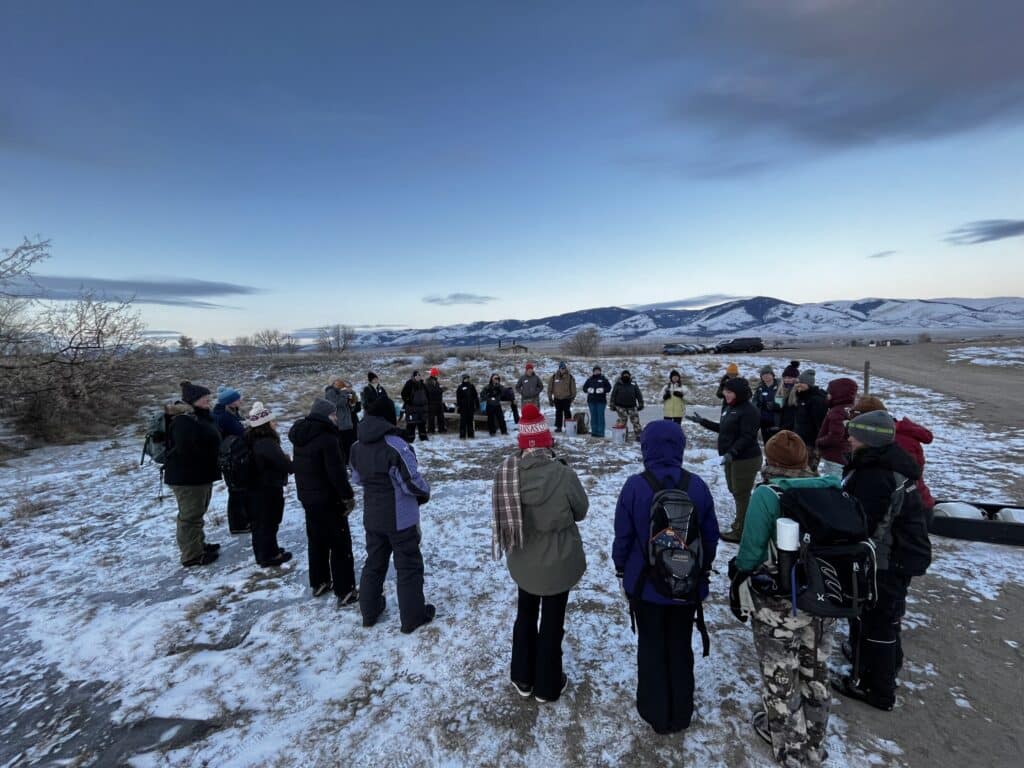
The women circled up, coffee mugs in hand, for introductions and a lesson on ice safety and staying warm before taking to the ice. Some women were avid ice anglers, some had been out a time or two with friends, and others were completely new to fishing.
With help from volunteer instructors Stephanie Adams-Clemen (Montana Fish Wildlife & Parks State Trails Coordinator), Kimberly (Berly) McCoy (an avid ice fisher and science podcast producer NPR’s daily science show, Short Wave), Katie Vivian (Montana Fish Wildlife & Parks Region 4 Fisheries Biologist), and Jessi Gudgel (Montana Fish Wildlife & Parks Aquatic Invasive Species Monitoring Specialist), the women rigged up ice fishing rods and shimmied like penguins across the ice to holes that the instructors had drilled by the light of headlamps earlier that morning.
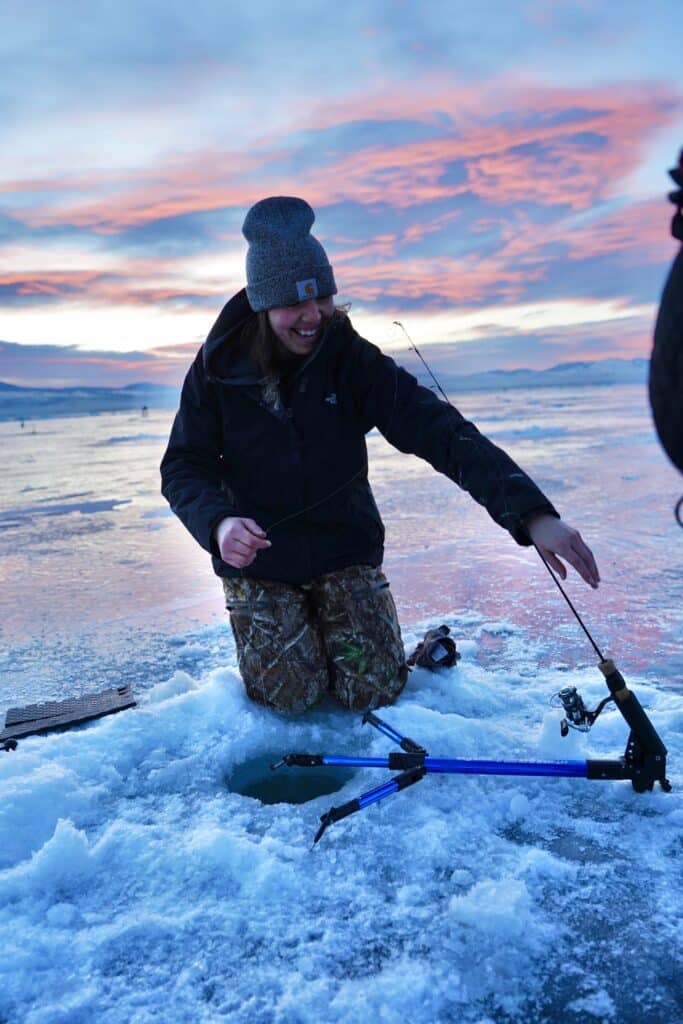
Each instructor came from a different background.
The event would not have been possible without its hosts: MWF and Artemis, the volunteer instructors, MWF staff who helped organize the event (Field Representatives Morgan Marks and Ilona Wilde, and Communications Coordinator Cameron Evans) and, of course, the event’s sponsors.
The sponsors for this event included Blackfoot River Brewery in Helena, North 40 Outfitters (which has locations in Great Falls and Havre, as well as other locations outside Montana), and Helena Tourism Alliance in Helena. We’re incredibly grateful for their support and community ethics.
As women began to fish, instructors went around offering lessons and advice and pausing for demonstrations. Instructors showed participants how to drill holes using an auger, how to add powerbait to a hook, how to tie basic knots, how to jig, and how to handle fish.
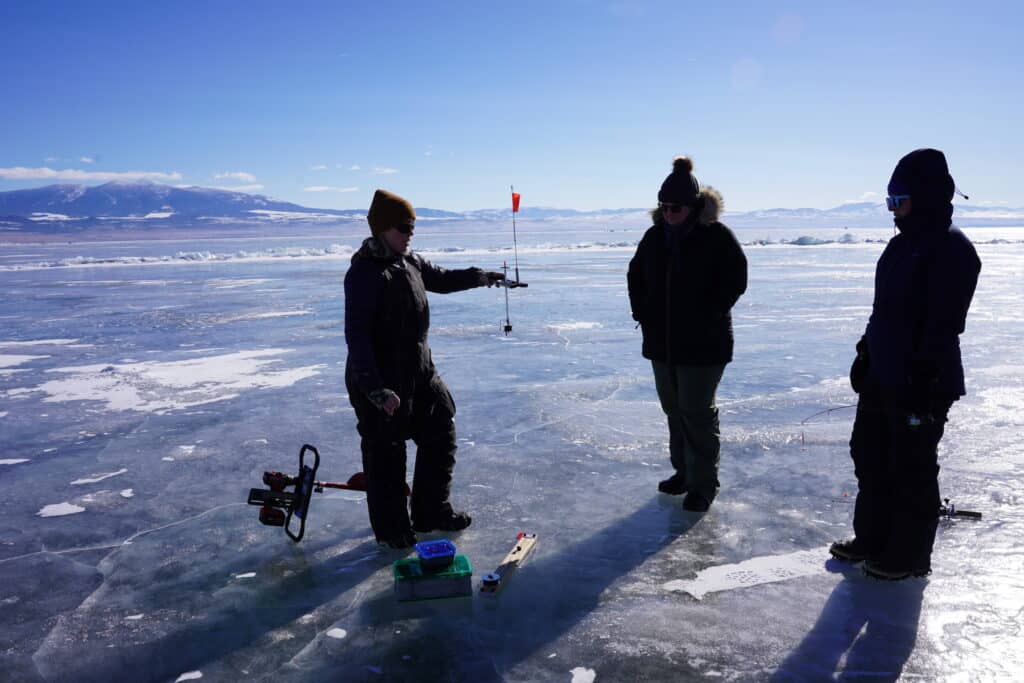
It wasn’t long before rods started to bend, with nearly a dozen healthy 2-3 pound rainbow trout caught by the group that day. Some women caught fish jigging, while others ran over to automatic hooksetters that the instructors had set up.

After a long, productive morning on the ice, the women reeled their line up, packed gear into sleds, and made their way to Silos Junction restaurant where they traded stories about the fish that were caught that day and the memories that were made along the way.
During lunch, MWF staff discussed the importance of women’s events and invited women to get involved however they would like going forward. Staff also shared multiple ways that women can become involved with ongoing conservation efforts through volunteering and field events, and have their voices heard on bills going through the 2023 Montana legislative session.
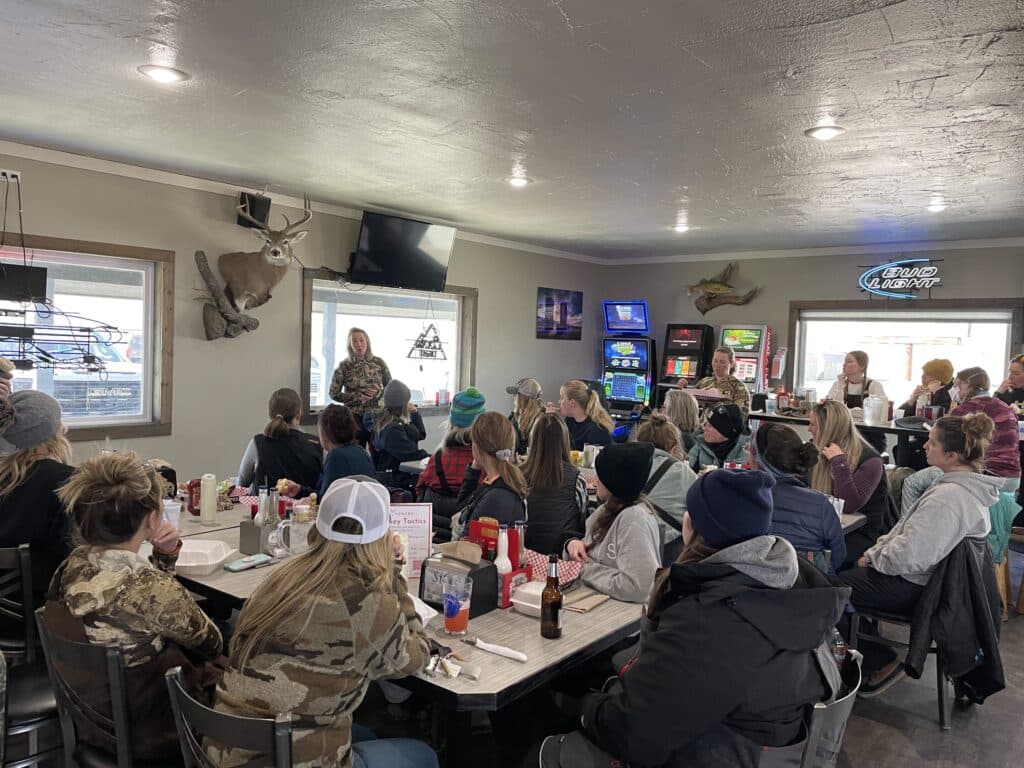
The clinic aimed to not only teach women how to ice fish but also to foster community and friendships among women. With similar goals, MWF and Artemis Sportswomen worked with Katie Vivian, to host a deer butchering workshop earlier this fall. Read all about that event HERE.
The goals of these women-focused events are three-fold: to increase women’s access and participation in outdoor recreation; give women the tools, skills, and confidence to continue to build upon skills learned in a safe and welcoming space; and increase women’s involvement and representation in conservation. Lastly, our community is an inclusive one. We welcome all womxn and gender non-conforming folks to this event and other women-focused events. If you identify yourself as a woman, no matter the complexity, we welcome you.
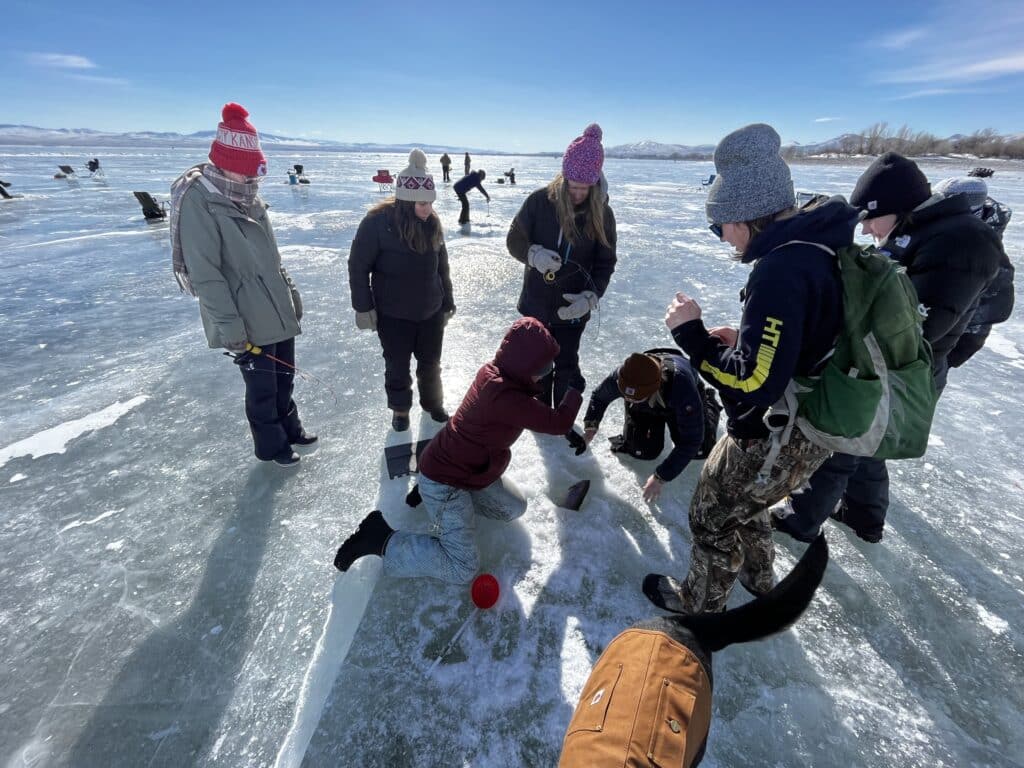
Studies have shown that creating a space for women in hunting and fishing not only helps them access the sport but also keeps them involved in the sport over time. That’s the goal of women-focused events, to continue creating spaces where women can learn, gather, network, have fun, and grow. We’re already looking forward to next year so stay tuned for announcements later this year about the third annual women’s ice fishing clinic!

